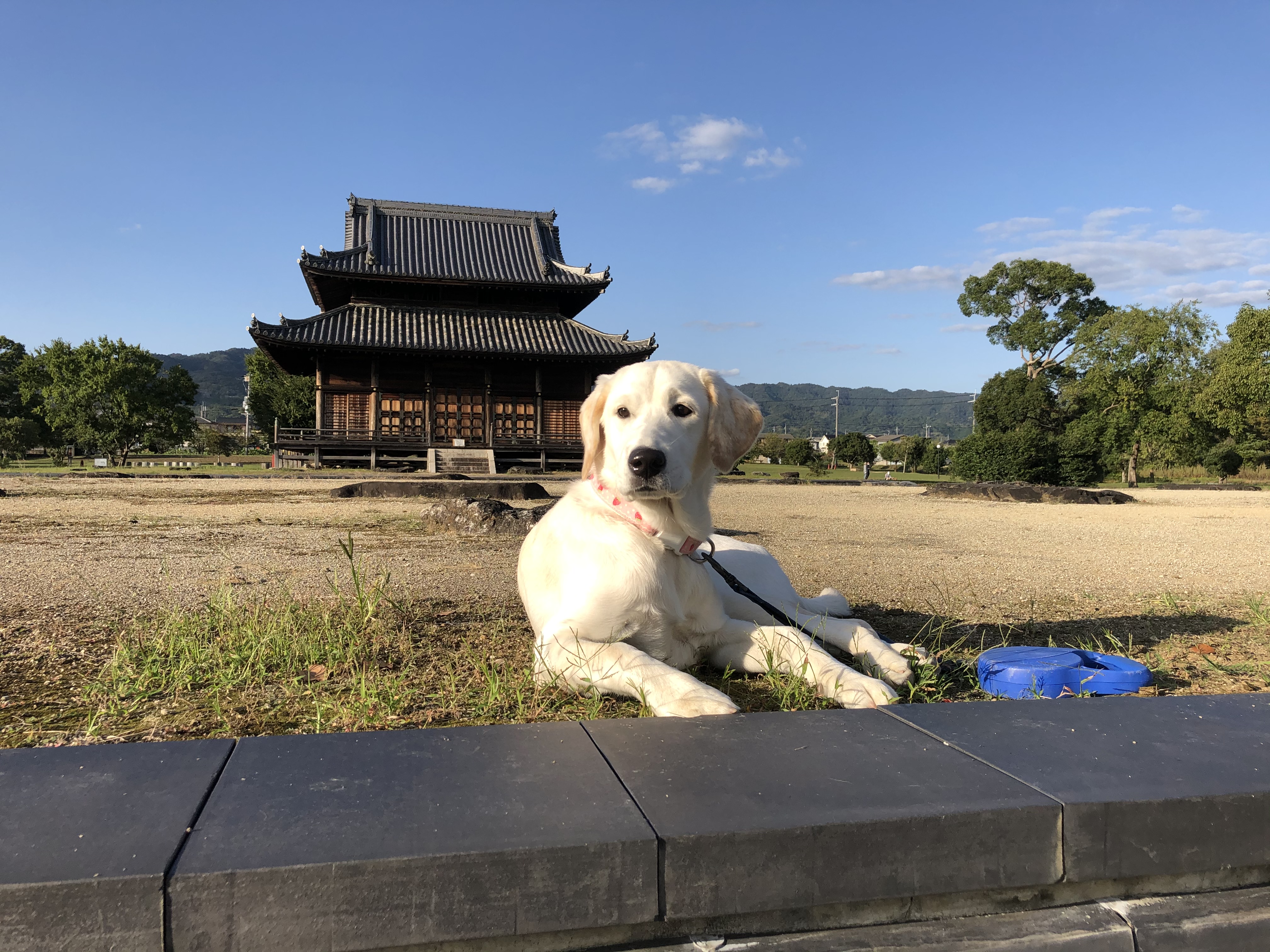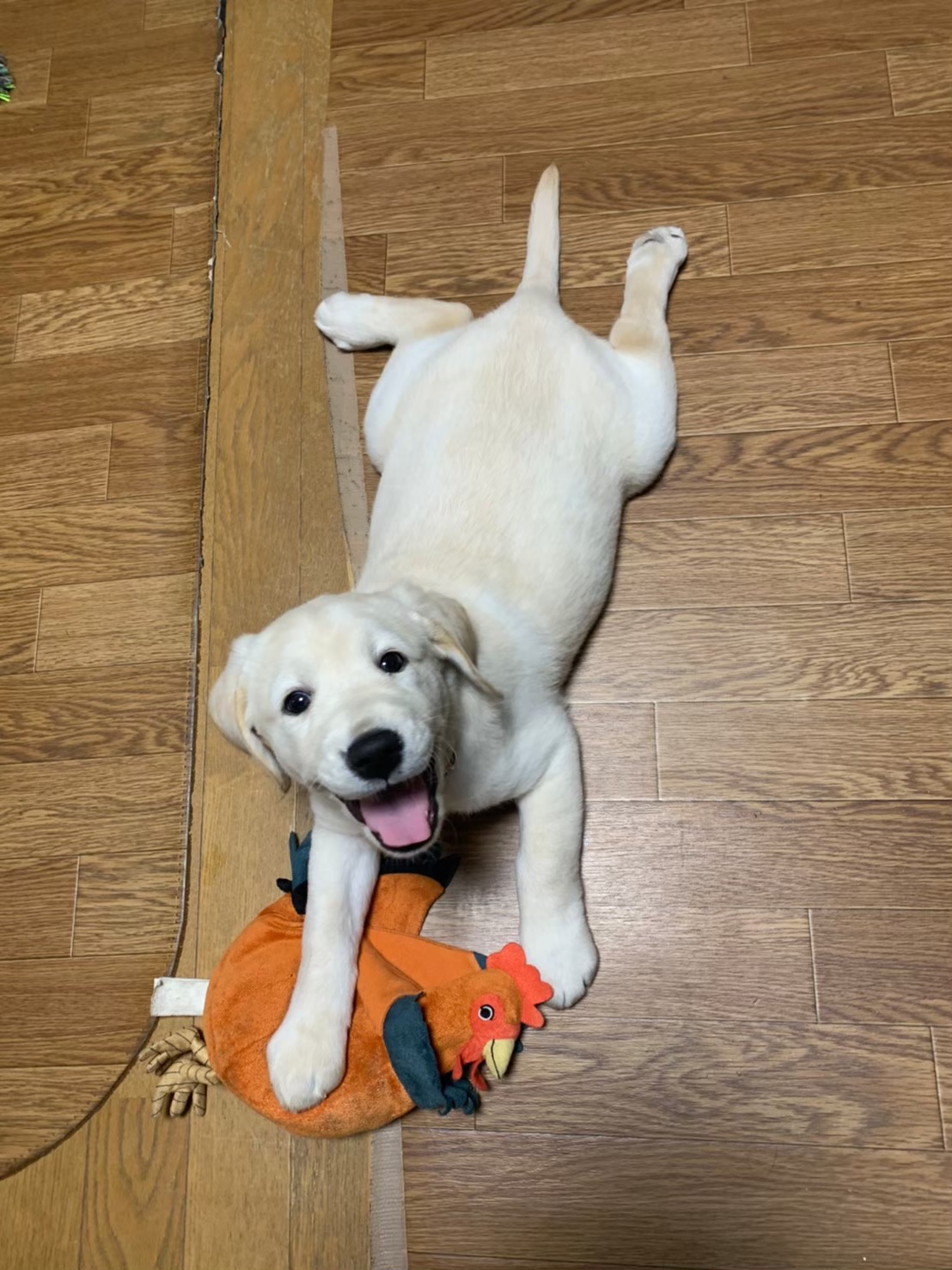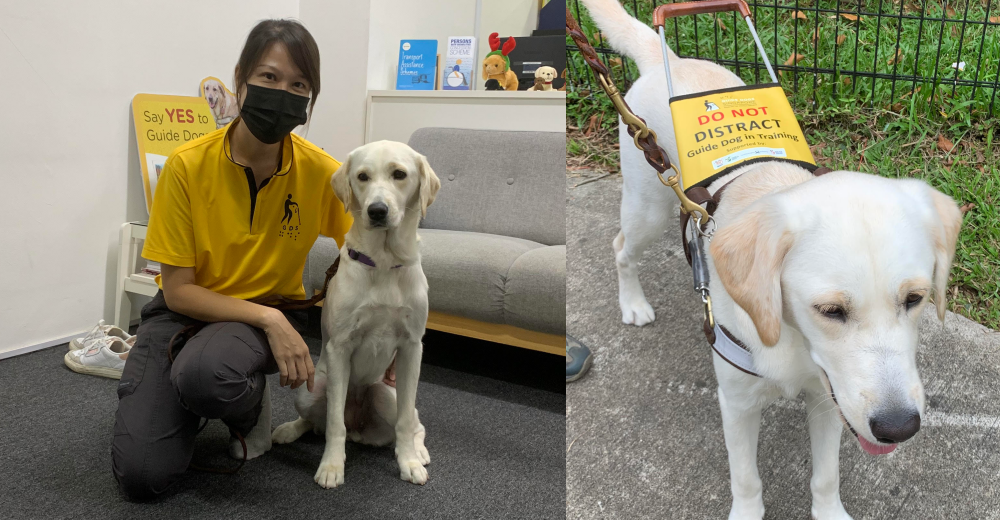Follow us on Telegram for the latest updates: https://t.me/mothershipsg
When a visually-impaired man and his guide dog work well together, they become a well-oiled machine.
The duo learn how to avoid even the smallest wobble and dent on the road.
They learn to negotiate potential hazards like walking off the top of a staircase or bumping into passers-by because the guide dog, like an automatic extension of its visually-impaired owner, learns to tug him away firmly, yet gently.
Without his sight, the owner can only gauge how far away his next destination — be it the lift or the bus — is. But with his trusted partner, he knows that he is going in the right direction.
A person with vision loss often finds that the mental work required to navigate the environment is stressful and anxiety-inducing, even with a cane.
Hence, with a guide dog, this mental load is lessened.
This is one of the many ways that guide dogs impact lives, as told to me by Christina Teng, Guide Dog Mobility Instructor (GDMI) with Guide Dogs Singapore (GDS).
First local guide dog instructor
Teng also happens to be the first instructor in Singapore to train a guide dog. And her trainee? The very cute and irresistible Eve:
 Image via Alfie Kwa.
Image via Alfie Kwa.
I entered Guide Dogs Singapore’s (GDS) office, anticipating my first encounter with Eve.
Knowing that she is a working dog, I tried not to get too excited about our first meet-up, but when I saw her I couldn’t help but let out a loud, “Awww”.
The dog, however, remained professional, staying on her mat while wagging her tail vigorously.
She kept looking back at Teng, waiting for the “okay” before coming over to greet me, gently rubbing her head against my legs.
I gave her a quick pat on the head before moving to the couch to begin my chat with Teng.
Interestingly, Teng’s fascination with dogs began years ago when she picked up a book about them in primary school. From that moment on, she was hooked.
She’d always thought of pursuing a career as an instructor but soon found out that there were no opportunities available locally.
In 2017, however, Teng found out through a TV programme that Guide Dogs Singapore was looking for local trainers.
She applied and got in immediately, though she had reservations as she would need to go to Australia for the training, leaving her two young kids behind.
But, she knew she had to jump on the opportunity.
Guide Dogs Singapore sent her to Guide Dogs Victoria in Melbourne from 2018 to 2020, to get her Guide Dog Mobility Instructor certification.
Her training was in-depth, designed to help her to really get into the mind of the visually-impaired. Aside from learning how to train guide dogs, Teng studied the conditions of visually-impaired persons and the daily difficulties they face.
This includes understanding how a visually-impaired person navigates with a guide cane and how they orientate themselves and move around in their surroundings.
After two years of studying and training, Teng is now Singapore’s first Guide Dog Mobility Instructor and will be training Eve, the 18-month-old Labrador and Retriever mix who is set to be the first guide dog to be trained in Singapore.
Eve’s training started two months ago and if all goes well, she might become a full-fledged guide dog in another three months.
Eve, who came to Singapore from Japan, still displays “puppyish behaviour” said Teng:
“This morning when I was walking her, she was alright. Then all of a sudden, she thought that it's time to play, and then she started to bite her leash, wanting to play.”
Eve, the guide dog in training
 Image via Alfie Kwa.
Image via Alfie Kwa.
Eve, like all other guide dogs, was not selected at random.
The dogs are picked from a lineage of guide dogs, and are chosen depending on their breed (often Labradors, Golden Retrievers, and German Shepherds), health, and temperament.
They then move to foster homes where volunteers take care of them and expose them to a home environment.
This means getting used to living in a home with people walking about and also loud sounds like vacuum cleaners and washing machines that may be frightening to some puppies.
Of course, the puppies also need to be taught basic obedience — toilet training, not jumping on the furniture, and not stealing food from the table.
The puppies also have to be exposed to “environmental stimulants” outside the house, said Teng.
One example would be the supermarket where there are trolleys, cash counters, and people walking everywhere. Or even getting on different modes of public transportation.
“The dogs are, in the first year, expected to know how to behave in these environments,” Teng explained.
After about a year of exposure, the puppies will be assessed for their general temperament and how they react to social environments.
The next stage — training — is where Eve comes in.
Teng listed a whole bunch of lessons she teaches guide dogs: Learning how to travel in a straight line, recognising directional commands, avoiding obstacles, stopping at kerbs, stopping to indicate stairs, and traveling on escalators and travelators.
But I wanted to see the training for myself, and so Teng kindly agreed to let me observe some of Eve’s training.
Once the cheerful and affectionate dog donned her harness, her focus immediately shifted away from everything else and onto Teng.
 Eve with her guide dog harness. Image via Alfie Kwa.
Eve with her guide dog harness. Image via Alfie Kwa.
Walking about five metres behind Teng and Eve, I watched as the pair began walking down the pavement toward a group of passers-by.
In such a situation, instructors will guide the dog away from people, teaching them to avoid the “obstacles”.
As we prepared to cross a road, Teng said, “stop” and Eve immediately halted.
 Teng and Eve crossing the road. Image via Alfie Kwa.
Teng and Eve crossing the road. Image via Alfie Kwa.
After waiting for a few seconds to check traffic, Teng swung her arm forward, pointing it ahead — an indication for Eve to continue on her walk.
According to Teng, training is done with simple voice commands and hand gestures on repeat so that the dog will slowly adapt and understand the commands.
When it comes to commands like “escalator”– which is for the guide dog to locate an escalator – instructors will command the word and move towards the escalator.
When done repeatedly, the dog will learn and eventually be able to do this on its own.
“The end goal is for the dogs to be able to do the required skills reliably without prompts from the handler. They cannot rely on the handler to tell them what to do all the time, like stopping at kerbs or avoiding obstacles.”
This is unlike regular dog training, where the onus is on the owner to give instructions and take responsibility for the dog's behaviour at all times.
The good and bad about training in Singapore
 Eve in Japan. Image via Guide Dogs Singapore.
Eve in Japan. Image via Guide Dogs Singapore.
There are some advantages to training a guide dog locally.
The dogs can get used to Singapore’s climate and surroundings at an early stage.
For instance, Eve was completely fixated by mynahs when she first arrived in Singapore. She also had to get used to stepping on grass — something she did not do often in Japan.
Acclimating a dog to these new stimulants and sensations during its training phase means that it won’t get a rude shock when it is finally deployed as a guide dog.
But there are also challenges when it comes to training guide dogs here.
Since training needs to simulate real-life situations, a large part of it takes place in public spaces. Issues may arise as people in Singapore are still not quite used to seeing guide dogs in malls and other public premises.
For example, members of the public might come up to the dog and distract them by making noise while they are undergoing training.
Teng has on occasion been barred from entering places despite Eve wearing her working harness with the label “guide dog” on it.
Also, finding a conducive training environment for escalator or travelator training can be difficult, as Teng will need to find outdoor escalators, or get permission from building management beforehand to use their escalators — Teng shared with me that she has yet to receive a reply from any of the building managers she has written to.
Matching the best dog for the handler
 Eve when she was still a puppy. Image via Guide Dogs Singapore.
Eve when she was still a puppy. Image via Guide Dogs Singapore.
After a guide dog’s training is complete, it will be paired with a suitable handler.
A lot of thought goes into assessing a pair’s suitability.
Instructors like Teng will evaluate both the dog and handler’s height, walking speed, strength, and even personality types.
“Some people (handlers) prefer a strong tension when dogs are guiding because they need the pull in the harness to feel where the dog is heading to. Whereas others will rather light tension as too strong a tension may be distracting for them.”
Some guide dogs may not be too fond of children, so they wouldn’t be assigned to a handler with kids at home.
It is also important for handlers to know that having a dog, even a guide dog, is a commitment.
Since its founding in 2006, GDS has provided seven competent handlers in Singapore with guide dogs.
For interested persons with visual impairment, GDS will first brief them on the commitments required — feeding them, bathing them, cleaning up after them, and ensuring that it doesn’t forget its training by bringing their dog out often.
“I'll always tell them, please go back, talk to your family and think it through,” said Teng.
If they are agreeable, Teng will proceed to assess the handler, to see how independent they are.
It’s important that the handler has a good mind map of what their routes are like, and a certain level of confidence to navigate on their own.
Teng will also assess the potential handler’s personality.
“When they are in a new environment, alone and they get lost. Do they panic? Cause if they do, the dog will start panicking too.”
If everything is good, the handler will take the dog they’re paired with on their routes, and let it learn their regular routines.
And this will be the start of a newfound friendship between man and dog.
The dog will be its handler’s best companion, guiding them through the day with its harness on.
But once it’s off, the dog is off duty and can run and play with other family members and dogs.
Moving forward, Teng hopes that the Singapore public will be more understanding of how guide dogs and their handlers operate.
When a guide dog has its harness on, it is on-duty.
The public should refrain from disturbing a guide dog outside — whether it is on duty or undergoing training.
Do not allow pets to approach a guide dog.
Also, do not attempt to teach the dog or do things contrary to what the handler has said. This will only confuse the dog and cause issues for the handler.
Lastly, be aware that guide dogs are allowed in eating places (including restaurants, food courts, and cafes) under the Environmental Public Health Act (Food Hygiene) Regulations.
“Our handlers have been told too often that they cannot enter F&B premises because the store does not have ‘a license to allow guide dogs’.
I reiterate — guide dogs are not pets.”
As we ended our hour-long conversation (uninterrupted, I might add), I sneaked a peek at Eve who was fast asleep at Teng’s feet.
It’s marvellous to even think that one day, this little creature is going to make such a difference in someone’s life.
To find out more about the work that Guide Dogs Singapore does, check out its website here.
Top image via Alfie Kwa.
Follow and listen to our podcast here
If you like what you read, follow us on Facebook, Instagram, Twitter and Telegram to get the latest updates.
